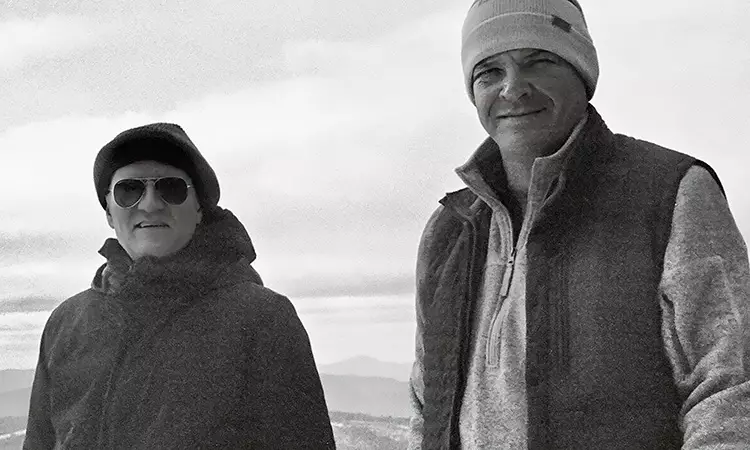The cinematic landscape is often shaped by a myriad of influences that mold the distinct voice of filmmakers. In the case of Nathan Zellner and his brother David, whose latest project Sasquatch Sunset marries absurdity with poignant storytelling, several cornerstone films have greatly impacted their artistic direction. This article delves into those formative influences as discussed by Nathan Zellner, exploring how the works of celebrated filmmakers have provided the foundation upon which their own storytelling is built.
Sasquatch Sunset beckons audiences into the mist-laden North American forests, where a family of Sasquatches grapples with the challenges of survival in an absurd world. The narrative, rich in humor and emotional depth, is undeniably a reflection of the brothers’ early cinematic experiences. Nathan identifies Stanley Kubrick’s iconic “dawn of man” sequence in 2001: A Space Odyssey as a pivotal influence. The bold choice of minimum narration in this sequence allows the visuals to convey the primal essence of life, tapping into the raw emotions of existence.
Kubrick’s masterful portrayal of the relationship between early humans and nature offers a profound understanding of life and death—elements that resonate strongly with the themes present in Sasquatch Sunset. The careful orchestration of animals within the narrative further mirrors the Zellners’ blend of absurdism with poignant storytelling, suggesting an intrinsic relationship between man and the world around him.
Among the genres that shaped the Zellner brothers’ vision is the creature feature, particularly exemplified by the film Harry and the Hendersons. Nathan recalls how this film effectively illuminated the Sasquatch figure by presenting it in a full light, contrasting the usual tendency in cinema to obscure or use such creatures solely as shock elements. The practical effects, reminiscent of a golden era for animatronics, contributed significantly to the film’s charm and warmth.
This nostalgic affection underscores a growing trend in contemporary filmmaking, where character-driven stories about mythical creatures allow for a nuanced exploration of themes such as family and identity. The Zellners’ approach in Sasquatch Sunset draws upon this legacy, amplifying the Sasquatches’ journey with humor and heartfelt moments.
Another substantial influence that Nathan recounts is the eclectic brand of humor found in Monty Python and classic Looney Tunes. The combination of surreal comedic elements and sharp editing processes are hallmarks of British comedy that have clearly left their mark on the Zellner’s approach to storytelling. As they cultivate their quirky and often absurd narratives, the brothers draw from the cleverness and timing that characterized these comedic classics.
Monty Python’s surreal humor, in particular, resonated with Nathan during his formative years, teaching him the power of a well-placed punchline and the art of subverting expectations. This playful engagement with storytelling is evident in Sasquatch Sunset, where the absurdity of the narrative interplays with deeper themes that provoke laughter and introspection.
The brothers’ quest for authenticity in their storytelling is predominantly shaped by the bold works of fellow filmmakers such as Werner Herzog. Nathan emphasizes how Herzog’s dedication to pushing the boundaries of filmmaking, especially evidenced in films like Fitzcarraldo, has been a source of inspiration. The sheer commitment to capturing genuine experiences, even at considerable personal and logistical expense, instilled in the Zellners a spirited approach to their craft.
Shooting Sasquatch Sunset deep within the Redwood forests of California serves as a symbolic nod to their reverence for authenticity—encapsulating the very essence of their story while honoring the triumphs and trials of adventurous filmmaking that Herzog championed.
The artistic landscape navigated by Nathan and David Zellner is woven from a rich tapestry of influences that intersect with their own creative imaginations. From the profound existential narratives of Kubrick and the charming creature features of longtime family favorites to British comedy’s whimsical charm and Herzog’s adventurous ethos, each element plays a vital role in shaping Sasquatch Sunset.
As they invite the audience on an odyssey through the forest with the last of the Sasquatches, the Zellner brothers not only pay homage to their cinematic past but also carve a unique identity in contemporary storytelling. Their film becomes more than just a story; it emerges as a celebration of the varied inspirations that have informed their artistic journeys, ultimately reflecting a broader narrative about the human experience as expressed through an extraordinary lens.

